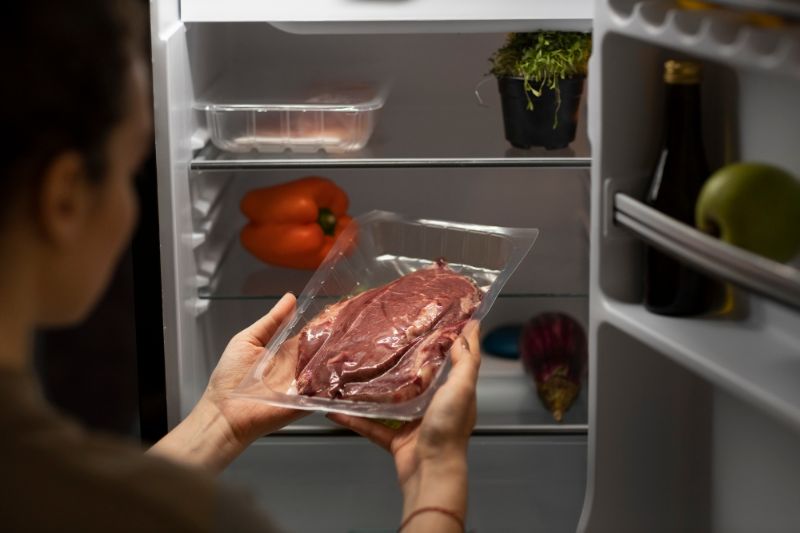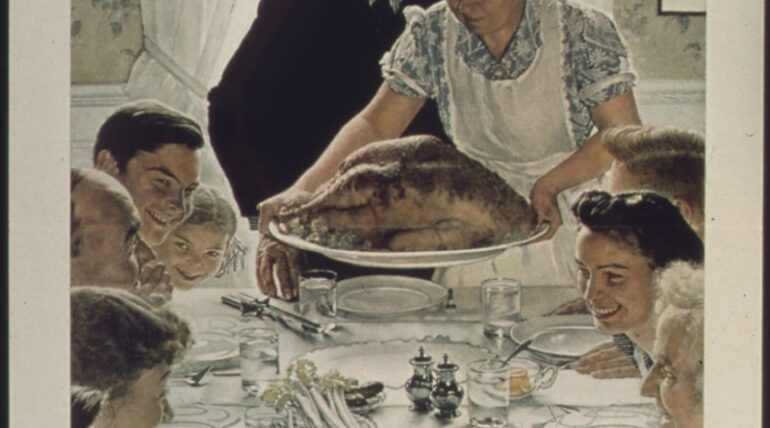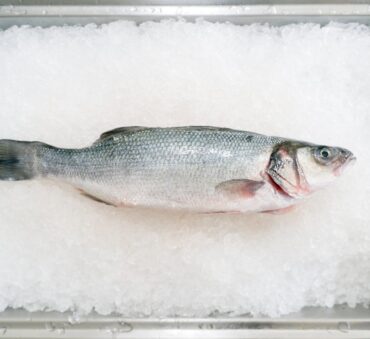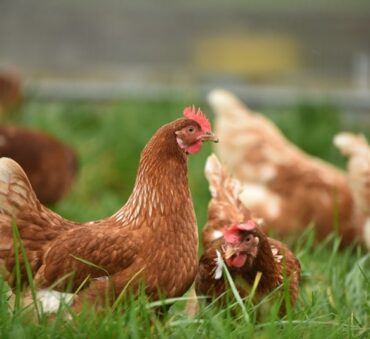Food waste in the United States has become a huge environmental, economic, and social issue, with up to 30-40% of the food supply wasted in the U.S. alone.
With approximately 130 billion meals wasted every single year, we have to ask ourselves: how has food waste changed over time, and when did it become such a big problem?
By understanding the history of food waste in America, we can make a conscious choice to find innovative solutions to the problem. For a more comprehensive understanding of America’s food waste timeline, let’s explore the early history of food waste, how the rise of consumerism contributed to the crisis, and the future of food waste in America.
Key Takeaways
- The history of food waste in America dates back to the 1600s but really took off in the late 1800s and early 1900s with the rise of industrialization.
- One of the early sources of food waste among American settlers was due to early colonial agricultural practices, as they didn’t have the same technology or techniques that we have today.
- Industrialization and urbanization provoked a huge transformation in food production and waste, with the invention of canning and easy access to food changing consumer behavior.
- The Great Depression and Dust Bowl provoked nation-wide food insecurity. While household waste decreased, waste at the production level became a huge problem.
- After World War II, there was a new wave of consumerism, with faster and cheaper production leading to an increase in food waste.
- Starting in the 1980s, there was a new awareness of the effects of food waste, giving rise to new regulations, initiatives, and technology to fight the food waste crisis.
When did food waste start in America?
Food waste in the United States started in the 1600s but became a larger issue in the late 1800s and early 1900s. With the rise of industrialization and manufactured products, families suddenly had easy access to affordable food in large numbers. The industrialization of food meant that individuals started relying on mass production instead of supporting local sources, gradually contributing to the change in consumer behavior.
As shown in our food waste timeline, there have been multiple events in history that have caused significant changes in consumer behavior. So much so that some of today’s most wasted foods are the same products that many families did not have access to in the past. So how did the increase in manufactured products lead to almost 40% of our food supply being wasted today?
As we’ll see below, certain advances, such as the invention of canned foods and the increased adoption of refrigerators, began as a way to extend a product’s shelf life. However, it instead laid the groundwork for modern consumerism and disposability.
The history of food waste is complex, with new inventions, wars, and a change in consumer behavior all to blame.

Food Waste Timeline in the United States
The history of food waste can be split into different eras, starting in the 1600s and continuing into the 21st century. To understand the transition from food scarcity to excess food waste, we have to explore the origins of food waste, which include early settlers, the industrial revolution, and the introduction of canned foods in the 18th century.
Early History of Food Waste in America (1600s-1800s)
Food waste in America started long ago, yet on a much smaller scale. This is because early settlers tried to avoid waste by preserving resources. During the 1600s, settlers and Native Americans used as much of the animal as possible, leaving very little to waste.
However, waste was still generated due to early colonial agricultural practices. While society relied heavily on agriculture, they did not have the same technology and techniques to preserve produce as they do today. Pests, weather conditions, and a lack of proper storage facilities all led to food waste, with little or no agricultural waste disposal regulations to safely manage the waste that was produced.
Early American settlers also had limited food preservation methods. While traditional methods include drying, smoking, salting, and fermentation, there was still excess spoilage on perishable foods. In 1809, canning was invented to address this issue; it was patented in 1810 by Peter Duran, making this a more widespread solution.
During this time, there was a divide in what people considered wasteful, often split by different social classes. Families that struggled with food scarcity often tried to reduce waste in their household, but this was sometimes inevitable due to crop failure and improper storage and waste management techniques. Families in higher social classes, on the other hand, were more willing to waste food that did not meet their standards.
In the late 1800s, there was a large increase in industrialization, which marks the next chapter in our food waste timeline.
The Industrial Revolution and Food Waste (Late 1800s-Early 1900s)
Industrialization and urbanization provoked a huge transformation in food production and waste. On one end, the increase in canning decreased waste due to the new ability to keep food fresher for longer. However, this new and easy access to food had a lasting impact on American consumerism.
Easy access to food generated the idea that food was disposable, and this new birth of consumerism had a huge impact on the environment. Due to mass production, there were changes in agricultural practices, such as the introduction of fertilizers and pesticides. This practice increased yields but also increased pollution and led to overproduction and spoilage.
Food waste in large cities also led to an increase in disease due to a lack of food waste removal systems. To address this growing health problem, public health officials saw the importance of proper food waste disposal. This led to the first garbage delivery systems being seen in the late 1800s.
In 1914, World War I led to an increased effort to conserve resources, brought on by government food conservation campaigns and food rationing.

The Great Depression and World War II: A Shift Towards Conservation (1930s-1940s)
The Great Depression and Dust Bowl both led to food scarcity in the United States, shifting the way Americans addressed food production and waste. The Great Depression started in 1929 and lasted until 1939, marking a time of high unemployment and economic hardship, while the Dust Bowl greatly damaged agriculture in the United States.
This era marks a time when families could not afford fresh food, there were not sufficient resources to transport produce, and areas that were not affected by the Dust Bowl were impacted by the reduction in demand. While household waste was reduced during this time due to food insecurity, the inability to transport produce resulted in piles of fresh produce being wasted. These two events made consumers change their previous mindset of industrialization, with a new focus on preserving food and repurposing food in the best way that they could.
Another milestone was the increase in refrigerators in the 1930s. Why was this important?
While refrigerators became more widespread to help families preserve food, they became a large contributor to food waste in today’s age of consumerism.
And then World War II began in 1939, helping get the nation’s economy back on its feet. Though the government encouraged citizens to continue rationing products, there was a new disinterest in conserving resources after overcoming World War I and the Great Depression. As the economy became more stable, more waste began to be produced.
Post-War Prosperity and the Rise of Consumerism (1950s-1970s)
When the war ended, mass production made way for a new wave of consumerism, making it a turning point in food waste history. Coming out of financial hardship and into a new economy with better conditions, consumer spending increased, and there was less importance placed on saving resources. This was matched with faster and cheaper production, making products more accessible for a growing economy with rising incomes.
The post-war period also saw advances in food production techniques, increasing yields and offering consumers more options. As retailers started catering to consumers’ needs, the United States saw an increase in packaged and processed foods.
As mentioned, the rise of refrigerators was also a large contributor to food waste. Instead of reducing waste, it became a new outlet for bulk purchasing and waste. This, along with the rise of television and the introduction of waste systems such as the garbage disposal, are just a few of the advances in technology that contributed to the crisis.
As consumers started expecting the newest and best products, they became more likely to discard foods than ever before.

Environmental Movement and the Reevaluation of Food Waste (1980s-2000s)
The 1980s to 2000s was an important period in America’s food waste history, as there was a new interest in creating sustainable solutions to food waste. During this era, discussion revolved around how food waste affects the environment and the economic impact of food waste. To combat relevant environmental issues, new sustainability efforts were directed towards food production, consumption, and waste.
Governments and organizations created initiatives to prevent food waste in the supply chain. There were various strategies used, such as redirecting excess food to nonprofit organizations and the implementation of food waste technology to reduce waste during production and distribution. One of the landmark acts during this time was the Bill Emerson Good Samaritan Food Donation Act. This act protects people and organizations from liability when donating to non-profit organizations, therefore encouraging organizations to donate food to charities.
Turning food waste into compost was also promoted, as it reduces landfill use, creates nutrient-rich soil amendments, and reduces the carbon footprint. All of these initiatives made way for new regulations and technology, as we’ll see below.
The 21st Century: Technological Advances and Policy Shifts (2000s-Present)
In 2015, the EPA and USDA announced a national goal to reduce food loss and waste in the U.S. by 50% by 2030. Since this announcement, there’s been an increase in food waste laws in the U.S., with many cities and states creating their own laws and initiatives. Though state-level food waste legislation varies, many regulations address organic waste recycling and offer tax initiatives to encourage participation.
At the federal level, there have been proposals and initiatives to standardize date labeling, improve food donation infrastructure, and provide incentives for businesses to adopt food waste reduction practices.
Many of the key strategies to reduce food waste include the implementation of advanced technology. New technology addresses food waste at various stages, including prevention, collection, and treatment and recycling. This includes technology for crop monitoring, temperature-controlled storage transportation, advanced inventory management systems, and waste tracking systems, among others.
Other strategies include promoting products near expiration, optimizing logistic routes, creating partnerships for redistribution, customer education through campaigns, and smart packaging solutions.
With more awareness of the food waste crisis, more businesses and individuals are able to do their part. That said, there’s still a long way to go, with collaboration between governments, manufacturers, retailers, and consumers being of high importance.

The Future of Food Waste in America
With a goal to cut food loss and waste in half by 2030, we expect to see an increase in policies, strategies, and food waste technology. Emerging technologies, such as machine learning and IoT, make tracking, monitoring, and optimizing food waste easier than ever. With the growth of these technologies, companies and organizations have a new opportunity to reduce waste while increasing their profit margin.
New policies and campaigns are also crucial in reducing waste, with consumer education being a high priority. To promote participation, many cities are implementing waste management strategies, such as community composting.
All individuals are encouraged to do their part in reducing waste. This may include repurposing, avoiding bulk purchasing, preventing food waste by understanding expiration dates, or getting involved in community initiatives. Food-related businesses and organizations also have a great opportunity to reduce large-scale waste by partnering with a waste management company.
The Bottom Line
The history of food waste in America shows that there’s a dire need for better waste management at every level of the supply chain. While cities and states are doing their part to implement laws and initiatives, organizations and individuals must take a more active role to reduce the environmental, economic, and social impact of food waste in the United States.
Partnering with a food waste recycling and management company helps keep companies on track by helping them comply with regulations and take full advantage of government initiatives. At Shapiro, we offer a range of organic waste management services to help businesses reduce large-scale waste and change the future of food waste in America.
Contact us to learn more about our services.
Baily Ramsey, an accomplished marketing specialist, brings a unique blend of anthropological insight and marketing finesse to the digital landscape. Specializing in educational content creation, she creates content for various industries, with a particular interest in environmental initiatives.



